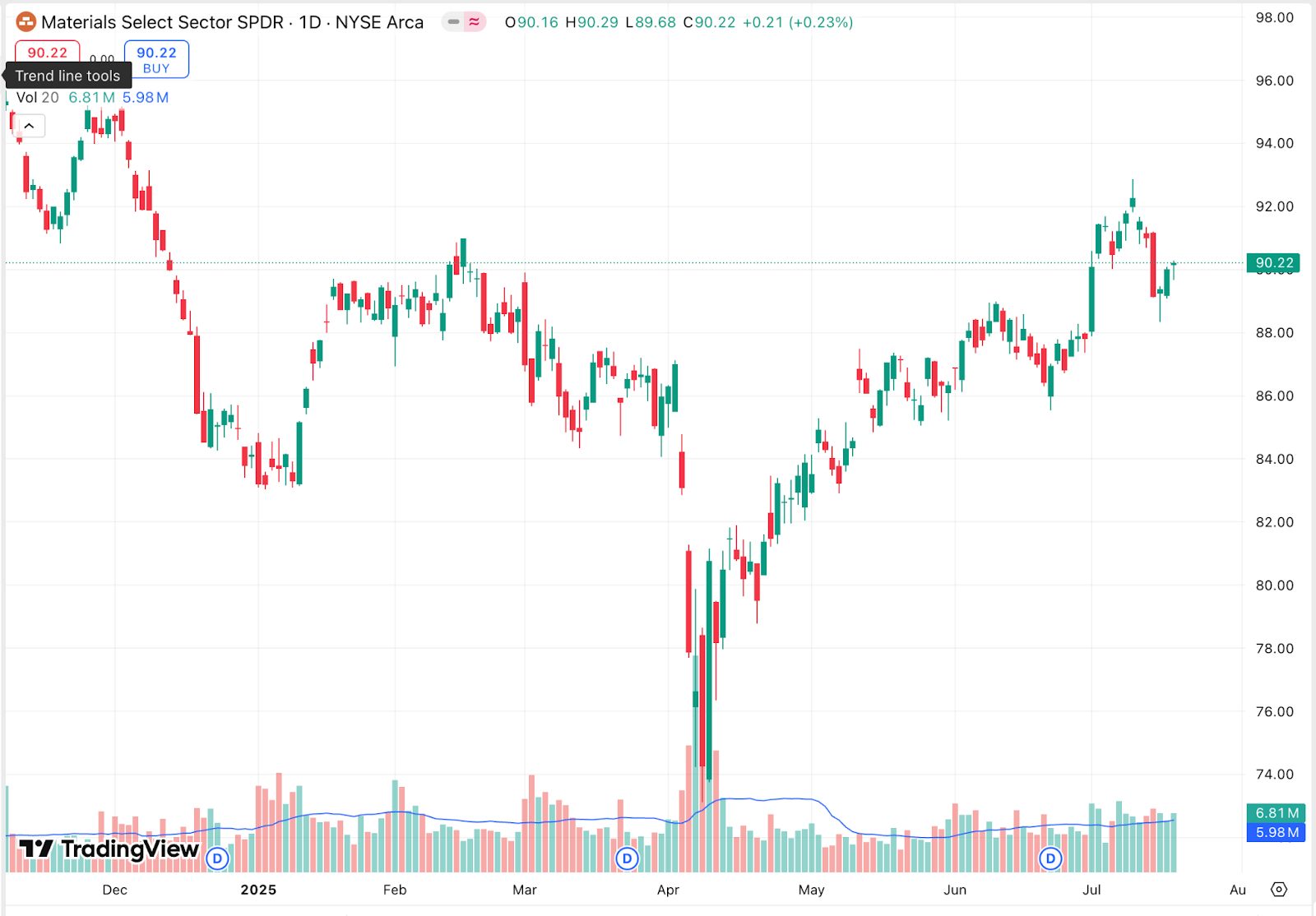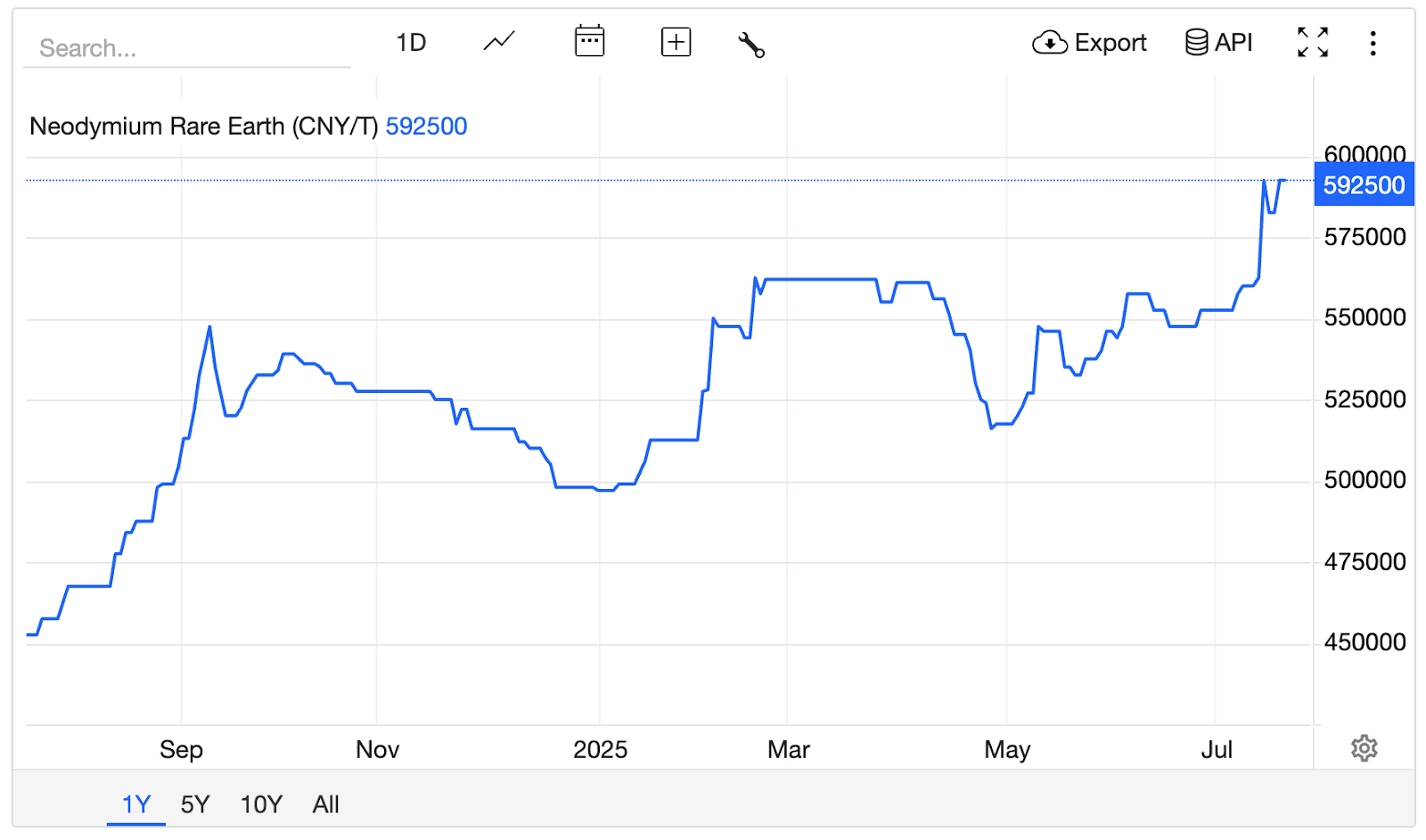Investing in Material Stocks

TradingKey - Materials stocks are content to play background roles in the investor roundup, eclipsed by technology leaders and finance titans. But they are an indispensable pillar to world economic life. They mine, process, and supply the essential feedstocks driving construction, manufacturing, agriculture, and innovation. Copper wire and cement to industrial gases and rare earths, the materials industry supports the very building blocks of modern society.
World developments over the last couple of years rekindled interest in this asset class. A renewed focus on supply chain durability, energy transition, and national resource self-sufficiency has refocused attention on previously low-growth or cyclically vulnerable businesses. World governments are spotlighting access to strategic materials.
Meanwhile, needs for solar energy, electric cars, and infrastructural renewal are driving up demand for seemingly commodity materials. As the world constructs, transitions, and reorganization occurs, materials demand is about to grow, and investors are taking notice.

Source: tradingview.com
Understanding Cyclicality and Timing for Material Understanding
Materials are cyclic in nature as they are directly related to the world economy's overall health. As GDP accelerates, construction of building structures and manufacturing boosts demand for metals, chemicals, and construction materials. But during slumps, the industry tends to lag as the pace of industrial production is reduced. Recognizing such cycles is critical for effective investment in the segment.
For the past two years, the sector experienced periods of weakness in the face of inflation pressures, increasing interest rates, as well as fears about a world-wide slowdown. Nevertheless, major material stocks stayed firm. Companies concerned with expenditures on infrastructure like makers of concrete, aggregates, or industrial gases posted phenomenal gains even in the face of increasing uncertainty.
Threats toward a period of monetary ease ahead and China signaling moves to prop up its property market see the broader materials landscape on the upswing. Investors projecting into the future can possibly enter into a place of undervaluation, with growing earnings potential on the horizon.
Quality in the Commodity Cycle
Though industry appears to be a purely cyclic or commodity industry on the surface level, it is far more intricate underneath. There are some sub-sectors in the space that have stable income and defensive characteristics even during economic downturns. Businesses providing industrial gas are providing long-term contracts and pricing power. Specialty chemicals makers, agrinput companies, and mineral royalty companies are in low-competitive niches with predictable demand.
Successful materials investing is about quality in the cycle. Rather than making a big punt on commodity prices, sophisticated investors opt for businesses with strong balance sheets, cost leaderships, and the ability to generate free cash flow into diverse environments. It can go from leaders in fertilizers and crop protection to businesses giving input to semiconductors and EVs or chosen miners with low cost structures and strategic assets.
Diversification is also important. A diversified materials portfolio might encompass large-cap industrial suppliers paired with mid-cap miners, together with rare earth producers and chems makers. That keeps volatility in check while growth-related momentum from emerging markets globally is paired with structural megatrends like decarbonization and electrification.
.jpg)
Source: aheadoftheherd.com
Strategic Advantage in Rare Earths and Resource Security
Rare earths are today one of the most closely watched corners of the materials universe. So-called critical minerals power all from smartphones to wind turbines to military gear to the motors in electric vehicles. As nations seek to secure domestic supplies and reduce reliance on overseas providers, demand for them has soared.
Here, some materials businesses could benefit from demand growth as well as political tailwinds. Governments are now financing domestic mining, refining, and processing. The public-private partnership explosion has established a formidable moat for companies in the center of the rare-earth supply chain. Volatility-tolerant investors may find compelling upside in companies positioned to grow rare-earth magnet manufacturing or expand mining operations to meet new regulatory mandates.
However, there are also potential dangers for rare earth investing. They are volatile shares linked directly to shifts in government policy, trade relations, as well as commodity prices. But for investors seeking a play on the intersection between technology growth, defense expenditures, and resource sovereignty, there is no more asymmetric play within the space than this niche.

Source: fred.stlouisfed.org
Valuation and Future Prospects for the Industry
Having lagged the overall market for significant portions of 2023 and 2024, materials stocks trade on a relative discount versus many other sectors today. On average, materials companies today trade on lower price-to-earnings multiples and lower price-to-book multiples than the S&P 500. That valuation discount is driven by lingering macro fears but also is a value buying opportunity.
For the remainder of 2025 and into the future, prospects are positive though with caution. Since inflation has come down, along with the cue by central banks to ease rate hikes, cost pressures on producers could ease up. Otherwise, a recovery in overseas building construction, green spending on infrastructure, as well as industrial demand could bolster volumes during the period. Profits are also projected to recover incrementally, principally by firms having themes on energy transitions or key infrastructure input.
Although not spared from volatility, the materials segment now offers investors a very attractive trio of value, structural growth opportunity, and macro leverage. As the world economy moves literally as well as figuratively into a resource-aware world, the companies engaged in extracting, refining, and distributing such materials are stepping out of the background into the spotlight of investment.
Conclusion: Why Materiality Matters Today
Once a quiet corner for commodity speculators, materials are today a strategic tool in national strategy, a cornerstone of energy evolution, and an engine for industrial innovation. From copper and concrete to fertilizers to rare earths, materials are shaping the world of tomorrow. For investors this is opportunity, but with caution. The key is selectivity, discipline, and cycle awareness.
By identifying quality businesses positioned in excellent secular trends, and being appreciative of cycle timing, investors can leverage the materials space not just as a defensive ballast, but as a generator of real growth. In an industry oftentimes obsessed with digital disruption, the offline world of materials is as relevant–and investable–today as it has ever been.









